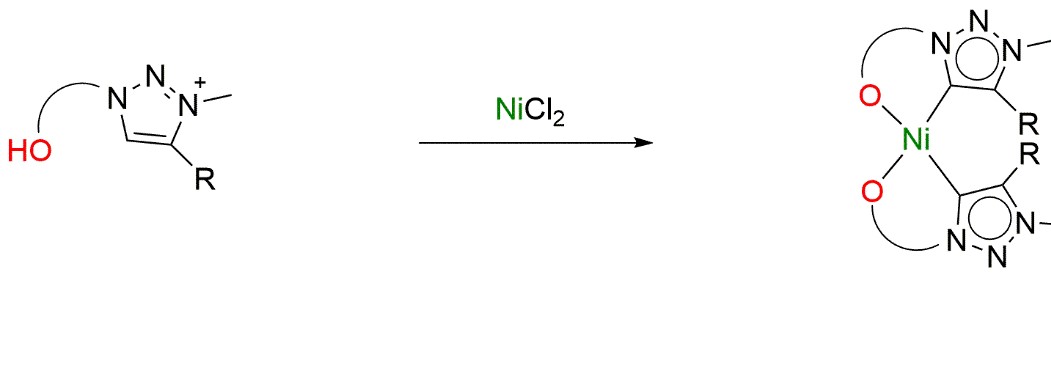Nickel complexes containing oxygen-chelating mesoionic carbenes as easily accessible catalysts for CO2 reduction
Research into new and efficient catalytic systems based on Earth-abundant metals represents a significant challenge for chemistry.1 A key prerequisite to reach this goal is the availability of suitable ligands to stabilize the metal center. This field has been considerably stimulated by the discovery of N-heterocyclic carbenes (NHCs) as ligands that impart unique properties.2 Triazolylidenes are a subclass of NHCs that are excellent σ-donors and have great electronic flexibility,3 which allows for the stabilization of a wide variety of oxidation states of transition metals. Furthermore, their convenient synthetic modification provides access to heteroatom-functionalized NHCs for chelation.

Here we will present a facile and versatile synthesis of mesoionic ligands bearing a potentially chelating hydroxide moiety on the triazole scaffold as well as a new class of nickel(II) complexes containing these C,O-bidentate chelating mesoionic carbenes starting from a cheap and simple metal precursor. These nickel complexes show excellent activity and selectivity in CO2 reduction, demonstrating great benefit of the hydroxyl group as chelating moiety for both the synthesis and the catalytic application of Earth-abundant metal complexes.
[1] R.M. Bullock, “Catalysis without precious metals”, 2011, Wiley-VCH, Weinheim, Germany.
[2] K.H. Dötz, J. Stendel, Chem. Rev. 2009, 109, 3227; F.E. Hahn, M.C. Jahnke, 2008, 47, 3112; W.A Herrmann, Angew. Chem. Int. Ed., 2002, 41, 1290.
[3] J.D. Crowley, A. Lee, K. J. Kilpin, Aust. J. Chem., 2011, 64, 1118; K.F. Donnelly, A. Petronilho, M. Albrecht, Chem. Commun., 2013, 49, 1145.